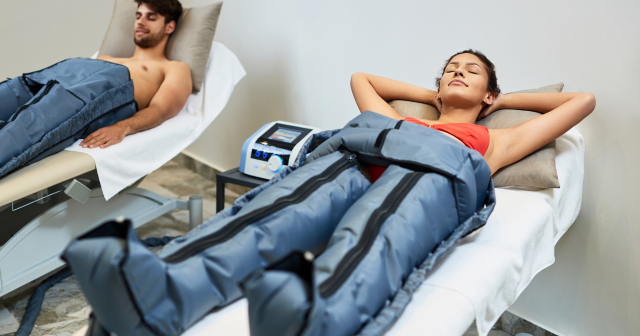How to Use Cold Compression Therapy for Muscle Recovery
It’s normal to feel sore after a good workout. How sore you are depends on your body’s adaptation to the workout intensity and exercises. If you're a beginner, you're likely to experience delayed muscle soreness (DOMS).
DOMS is pain and stiffness in the muscles after exercising. It typically peaks between 24-72 hours. The soreness happens because of micro-tears in the muscles during excruciating movements. These occur when muscles lengthen while under tension.
Why Cold Therapy is Effective
When your muscles are tired and sore, it makes sense to seek healing and comfort in cold treatments. This method of recovery is not new. It has been used for centuries by medical practitioners. Traditionally, people mostly use ice packs to soothe their injured parts at home. Additionally, many people also use cold showers and ice baths to get the benefits of cold therapy.
How Ice Compression Therapy Promotes Muscle Recovery
However, an ice compression therapy machine is the device that will get you the full benefits of cold therapy. With the advancements in technology, cold compression therapy has come up and it works miraculously for muscle recovery. It is especially, a boon for athletes and fitness enthusiasts.
Cold compression therapy or cryotherapy refers to exposing an injured part of the body to extremely cool temperatures. As a result, recovery speeds up and inflammation in the muscles is reduced. Nowadays, cryotherapy machines for home are gaining a lot of traction and are widely acclaimed for recovery in athletes. Below are some of the ways through which ice compression therapy promotes muscle recovery:
Reduces Swelling
Swelling is a common response to muscle damage, especially after an intense workout. When muscles are overworked, the body increases blood flow to the affected area, causing fluid to accumulate and resulting in inflammation. Cold therapy works by constricting blood vessels, which reduces blood flow and limits fluid buildup. This helps prevent further swelling and allows the body to focus on healing.
The added compression further enhances this process. Compression gently supports the muscle and helps keep the swelling from spreading. By reducing swelling, cold compression therapy can prevent discomfort from escalating and accelerate the body’s natural healing process. If swelling is left untreated, it can increase pressure on the muscles and joints, causing more pain and extending recovery time.
Helps in Pain Management
After a hard workout, muscle soreness can range from mild discomfort to more intense pain. The pain is often a result of inflammation, as well as the overstimulation of nerves in the affected area. Cold therapy is well-known for its ability to numb pain. By cooling the affected area, cold reduces nerve activity and slows down the pain signals being sent to the brain. This is why ice packs are a common remedy for pain relief. In addition to the numbing effect, compression helps support the muscles, providing stability and reducing the strain on sore muscle fibers.
By gently compressing the area, the pressure can decrease the sensation of pain and prevent further irritation. Together, cold therapy and compression create a powerful combination that provides immediate pain relief and allows for more comfortable movement during recovery. This makes it easier for individuals to resume light activity or stretch without experiencing intense discomfort.
Improves Circulation
One of the key benefits of cold compression therapy is its ability to improve circulation. When cold is applied to the muscles, the blood vessels constrict, which initially reduces blood flow to the affected area. However, once the cold therapy is removed, the blood vessels expand, allowing fresh blood to flow into the area. This increased circulation brings oxygen and nutrients to the muscles, which helps repair the damaged tissues and flush out waste products.
Compression plays a vital role in this process by aiding in the movement of fluids out of the area. The gentle pressure encourages fluid to move from the swollen tissues, preventing further fluid buildup and encouraging a healthier circulation process. By promoting better circulation, cold compression therapy supports faster recovery, reduces muscle stiffness, and helps prepare the muscles for future activity.
Improves Recovery Time
Cold compression therapy not only helps reduce pain and swelling, but it also significantly speeds up the overall recovery process. The combination of cold therapy and compression works synergistically to promote healing and reduce the time it takes for your muscles to recover. By reducing inflammation and improving circulation, this therapy helps muscles heal faster, allowing you to return to physical activities with less downtime. Recovery time is often one of the biggest obstacles to achieving fitness goals, especially for those who engage in intense exercise.
Whether you're preparing for a competition, recovering from an injury, or simply aiming to improve your overall fitness, reducing recovery time is crucial to maintaining long-term progress. Cold compression therapy can be an essential tool in keeping you on track toward your goals.

.png)
Comments
Post a Comment